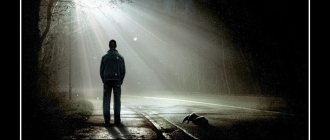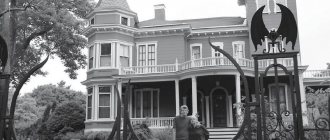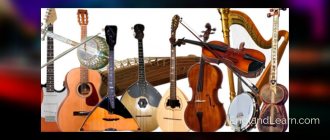January 25, 2017Literature
The Chronicles of Narnia by Clive Staples Lewis, which ranks high on most lists of the best books of all time, is a mysterious phenomenon, the key to which has not yet been found. Let's try to figure out how to read them
Author Nikolai Epple
Lewis's main specialty was a literary historian. For most of his life he taught the history of literature of the Middle Ages and the Renaissance at Oxford, and in the end he headed a department created especially for him at Cambridge. In addition to five scientific books and a huge number of articles, Lewis published eight books in the genre of Christian apologetics (BBC programs on religion during the Second World War made him famous throughout Britain, and “Letters of a Screwtape” - in Europe and the USA), a spiritual autobiography, three parable stories, three science fiction novels and two collections of poems. The complete collection of poems, which turned out to be quite voluminous, was published quite recently.. As is the case with Lewis Carroll, John R. R. Tolkien and many other “children’s” writers, the books for children that brought Lewis world fame were far from the most important things he wrote.
Clive Staples Lewis. Oxford, 1950 © John Chillingworth / Getty Images
The main difficulty of Narnia is the incredible diversity of material from which it is assembled. This is especially noticeable against the backdrop of the fiction books of John Tolkien, Lewis's closest friend and fellow member of the Inklings literary community .
- an informal literary circle of English Christian writers and thinkers that gathered in Oxford in the middle of the last century around Clive Lewis and John Tolkien. It also included Charles Williams, Owen Barfield, Warren Lewis, Hugo Dyson and others, a perfectionist, extremely attentive to the purity and harmony of themes and motives. Tolkien worked on his books for years and decades (most were never finished), carefully polishing the style and carefully ensuring that no outside influences penetrated into his meticulously thought-out world. For example, in The Lord of the Rings there is no mention of tobacco. ") and potato ("potato"), because these are words not of Germanic, but of Romance origin, but only pipe-weed and taters.. Lewis wrote quickly ("Narnia" was created from the late 1940s to 1956), cared little about style and lumped together different traditions and mythologies. Tolkien did not like The Chronicles of Narnia, seeing in them an allegory of the Gospel, and allegorism as a method was deeply alien to him (he never tired of fighting off attempts to present The Lord of the Rings as an allegory in which the War of the Ring is the Second World War, and Sauron is this is Hitler). Allegorism is indeed not alien to Lewis. Lewis himself, who knew well what allegory is (his most famous scientific book, “The Allegory of Love,” is dedicated to this), preferred to talk about “Narnia” as a parable (he called it a supposition, “hypothesis”). “The Chronicles of Narnia” is something of an artistic experiment: what the incarnation of Christ, his death and resurrection would look like in a world of talking animals, and yet to see in “Narnia” a simple retelling of biblical stories means to simplify them extremely.
The first part of the series features Father Christmas, the Snow Queen from Andersen's fairy tale, fauns and centaurs from Greek and Roman mythology, endless winter from Scandinavian mythology, English children straight from Edith Nesbit's novels, and the plot is about the execution and revival of the lion Aslan duplicates the gospel story of the betrayal, execution and resurrection of Jesus Christ. To understand what The Chronicles of Narnia are, let’s try to decompose their complex and diverse material into different layers.
In what order should I read it?
The confusion begins with the order in which The Chronicles of Narnia should be read. The fact is that they are not published in the order in which they were written. The Magician's Nephew, which tells the story of the creation of Narnia, the appearance of the White Witch there, and the origin of the Wardrobe, was written next to last, followed by The Lion, the Witch and the Wardrobe, which retains much of the charm of the original story. In this sequence, it was published in the most efficient Russian edition - the fifth and sixth volumes of the eight-volume collected works of Lewis - and most film adaptations of the book begin with it.
After The Lion, the Witch and the Wardrobe comes The Horse and His Boy, then Prince Caspian, The Voyage of the Dawn Treader, The Silver Chair, then the prequel The Sorcerer's Nephew and finally Last fight".
1 / 7
Cover of the book The Lion, the Witch and the Wardrobe. 1950 Geoffrey Bles, London
2 / 7
Cover of the book “The Horse and His Boy.” 1954 Geoffrey Bles, London
3 / 7
Cover of the book "Prince Caspian". 1951 Geoffrey Bles, London
4 / 7
Cover of the book “The Treader of the Dawn Treader, or Sailing to the End of the World.” 1952 Geoffrey Bles, London
5 / 7
Cover of the book “The Silver Chair”. 1953 Geoffrey Bles, London
6 / 7
Cover of the book “The Sorcerer’s Nephew.” 1955 The Bodley Head, London
7 / 7
Cover of the book "The Last Battle". 1956 The Bodley Head, London
The surge of interest in The Chronicles of Narnia in recent years has been associated with Hollywood adaptations of the series. Any film adaptation inevitably confuses fans of the literary source, but here the fans’ rejection of the new films turned out to be much more acute than in the case of The Lord of the Rings. And, oddly enough, it’s not even a matter of quality. The film adaptation of books about Narnia is complicated by the very allegorism, or, more precisely, parable, of the country of Aslan. Unlike “The Lord of the Rings,” where the dwarves and elves are, first of all, dwarves and elves, behind the heroes of “Narnia” the background often clearly appears (when the lion is not just a lion), and therefore a realistic film adaptation turns a parable full of hints into a flat one action. Much better are the BBC films made between 1988 and 1990, with a stuffed Aslan and talking fairy tale beasts: The Lion, the Witch and the Wardrobe, Prince Caspian, The Treader of the Dawn Treader and The Silver Chair.
A still from the series “The Chronicles of Narnia.” 1988 © BBC / IMDb
Where did it come from?
Lewis liked to say that Narnia began long before it was written. The image of a faun walking through the winter forest with an umbrella and bundles under his arm haunted him from the age of 16 and came in handy when Lewis for the first time - and not without some fear - came face to face with children with whom he did not know how to communicate. In 1939, his house near Oxford was home to several girls evacuated from London during the war. Lewis began to tell them fairy tales: this is how the images that lived in his head began to move, and after a few years he realized that the emerging story needed to be written down. Sometimes interactions between Oxford professors and children end up like this.
1 / 2
A fragment of the cover of the book “The Lion, the Witch and the Wardrobe.” Illustration by Paulina Baines. 1998 Collins Publishing. London
2 / 2
Cover of the book The Lion, the Witch and the Wardrobe. Illustration by Paulina Baines. 1998 Collins Publishing. London
Lucy
The prototype of Lucy Pevensie is considered to be June Flewett, the daughter of a teacher of ancient languages at St. Paul's School (Chesterton graduated from it), who was evacuated from London to Oxford in 1939, and in 1943 ended up in Lewis's house. June was sixteen and Lewis was her favorite Christian author. However, only after living in his house for several weeks did she realize that the famous apologist C. S. Lewis and the owner of the house, Jack (as his friends called him), were one and the same person. June entered drama school (with Lewis paying for her tuition), became a famous theater actress and director (her stage name is Jill Raymond) and married the grandson of the famous psychoanalyst Sir Clement Freud, writer, radio presenter and member of parliament.
Lucy Barfield at 6 years old. 1941 © Owen Barfield Literary Estate
“Narnia” is dedicated to Lewis’s goddaughter, Lucy Barfield, adopted daughter of Owen Barfield, author of books on the philosophy of language and one of Lewis’s closest friends.
Hobo Quackle
Scowl from The Silver Chair is based on the outwardly gloomy but kindly inside gardener Lewis, and his name is an allusion to a line of Seneca, translated by John Studley John Studley (c. 1545 - c. 1590) was an English scholar known as a translator Seneca. (in English his name is Puddleglum - “sullen slurry”, Studley had “Stygian gloomy slurry” about the waters of the Styx): Lewis examines this translation in his thick book dedicated to the 16th century, CS Lewis. English Literature in the Sixteenth Century: Excluding Drama. Oxford University Press, 1954..
Khmur the tramp quack. A still from the series “The Chronicles of Narnia.” 1990 © BBC
Narnia
Lewis did not invent Narnia, but found it in the Atlas of the Ancient World when he was studying Latin in preparation for entering Oxford. Narnia is the Latin name for the city of Narni in Umbria. Blessed Lucia Brocadelli, or Lucia of Narnia, is considered the city's heavenly patroness.
1 / 2
Narnia in Murray's Latin Small Atlas of the Ancient World. London, 1904 Getty Research Institute
2 / 2
Map of Narnia. Drawing by Paulina Bays. 1950s © CS Lewis Pte Ltd. / Bodleian Libraries University of Oxford
The geographical prototype that inspired Lewis is most likely located in Ireland. Lewis loved northern County Down from childhood and traveled there more than once with his mother. He said that “heaven is Oxford transported to the middle of County Down.” According to some sources, this is a quote from a letter from Lewis to his brother that wanders from publication to publication: “That part of Rostrevor overlooking Carlingford Lough is my image of Narnia.” However, it appears to be fictitious. There are no such words in Lewis's letters that have come down to us: they are taken from a retelling of a conversation with his brother described in Walter Hooper's book Past Watchful Dragons. Lewis even told his brother the exact place that became for him the image of Narnia - the village of Rostrevor in the south of the county The Down, or rather the slopes of the Mourne Mountains, overlooking the glacial fjord of Carlingford Lough.
1 / 3
View of Carlingford Lough Thomas O'Rourke / CC BY 2.0
2 / 3
View of Carlingford Lough Anthony Cranney / CC BY-NC 2.0
3 / 3
View of Carlingford Lough Bill Strong / CC BY-NC-ND 2.0
Digory Kirk
The prototype of the elderly Digory from The Lion and the Witch was Lewis's tutor, William Kirkpatrick, who prepared him for admission to Oxford. But the chronicle “The Sorcerer’s Nephew,” in which Digory Kirke resists the temptation to steal the apple of eternal life for his terminally ill mother, is connected with the biography of Lewis himself. Lewis experienced the death of his mother at the age of nine, and this was a severe blow for him, leading to the loss of faith in God, which he was able to regain only at the age of thirty.
Digory Kirk. A still from the series “The Chronicles of Narnia.” 1988 © BBC
The Chronicles of Narnia: Prince Caspian
Towel. Lord Miraz? You have a son. Heaven rewarded us. You know your responsibilities. General Glozel? Yes, my lord. Five more minutes. We will not look at the stars today, my prince. Let's go. We need to hurry. - What's going on, teacher? - Your uncle gave birth to... ...a son. Let's go. You must get to the forest. — Les? - They won’t follow you there. It took me many years to find this. Use only in case of emergency. Will I see you again someday? I really hope so, my prince. I have so much to tell you. Everything you know can change. Raise the bridge! Go. - Stop! - Stop! Son! Son! Lady Prynaprismia gave Lord Miraz a son! THE CHRONICLES OF NARNIA PRINCE CASPIAN What, you old sages, do you want to spend the night in prison? He saw us. Take care of him. No! - Look at the road, baby. - Sorry. Watch where you're going! Wait for me! PICCHE POST B Saint Finbar are you studying? Yes. I'm at Hendon Hayes. Across the road. I saw you... ...you were sitting alone. Yes, I prefer to be alone. Me too. What's your name? — Philis. - Susan! Come on quickly. Newspapers! Buy a daily newspaper! DEFENSE OF THE COUNTRY? DUTY OF A CITIZEN Edmund! Come on! Punch him in the face! Stop. Go your separate ways. That's enough. That's enough. Get up. Don't be a child! - Where is thank you? - I needed to figure it out. What about this time? - He pushed me. - And that’s why you hit him? No. After he pushed me, they wanted me to apologize. - Then I hit him. - Really? - Is it difficult to just pass by? - Yes. So you're not tired of being treated like children? We are the children. I haven't always been one. A year has passed. How long should we wait? I think it's time to come to terms with the fact that we live here. And stop dreaming about something else. Oh no. - Pretend that you are talking to me. - We are talking to you. STRAND - Tixo, Ly. - Someone pinched me! - Stop pushing! - I didn’t touch you. Listen, what are you all... What is this? - It's like magic. - Take hands. - I won’t take your hand! - Just... EXIT And I’ll hurry up, Ed! Whoever is last is a rotten egg. Be careful! Here she is! Just a minute! Come on, Susan! Quickly! Come here, it’s so good. Edmund. Ed? Ed! - What is it? - Where do you think we are? Where do you think? But I don't remember any ruins in Narnia. I wonder who lived here. I think we are. Hey, this is mine. — From my chess set. - What kind of chess? In Finchley, I didn’t seem to have golden chess. It can't be. - Don't you see? - What? Makeover the walls. And the columns are over there. And a glass roof. Cairn-Pavel. Wait. Stop, my lord. It's not what you think. Then what is this? We are not entirely sure. Unbelievable. When the council chose Lord Miraz... -... I warned about the consequences. - No. We cannot accuse the lord without evidence. How long will we hide? Until all the chairs here are empty? Please excuse the council for my lateness. I didn't know we were having a meeting. No wonder, you have a lot of other things to do. My lord? After the death of Caspian the Ninth, you behave like a king. And now Prince Caspian has disappeared from the castle. My condolences, Lord Miraz. I can imagine how hard it is to lose your nephew, the rightful heir to the throne, on the night when your wife gave you a son. Thank you, Lord Copespian. Your compassion helps a lot in such difficult times.
How The Chronicles of Narnia Connects to the Bible
Aslan and Jesus
The biblical layer in Narnia was most important to Lewis. The Creator and ruler of Narnia, “the son of the Emperor-beyond-the-sea,” is depicted as a lion not only because this is a natural image for the king of a land of talking animals. Jesus Christ is called the Lion of the Tribe of Judah in the Revelation of John the Theologian. Aslan creates Narnia with song - and this is a reference not only to the biblical story of creation by the Word, but also to creation as the embodiment of the music of the Ainur Ainur - in Tolkien's universe, the first creatures of Eru, the supreme principle, participating with him in the creation of the material world. from Tolkien's The Silmarillion.
Aslan appears in Narnia at Christmas, giving his life to save the “son of Adam” from the captivity of the White Witch. The forces of evil kill him, but he is resurrected, because the ancient magic that existed before the creation of Narnia says: “When instead of a traitor, one who is not guilty of anything, who has not committed any betrayal, ascends to the sacrificial Table of his own free will, the Table will break and death itself will recede before him.”
Aslan on the Stone Table. Illustration by Paulina Baines for The Lion, the Witch and the Wardrobe. 1950s © CS Lewis Pte Ltd.
/ narnia.wikia.com / Fair use At the end of the book, Aslan appears to the heroes in the form of a lamb, symbolizing Christ in the Bible and early Christian art, and invites them to eat fried fish - this is an allusion to the appearance of Christ to the disciples on Lake Tiberias.
Shasta and Moses
The plot of the book “The Horse and His Boy,” which tells about the escape of the boy Shasta and the talking horse from the country of Tarkhistan, which is ruled by a tyrant and where false and cruel gods are worshiped, to free Narnia, is an allusion to the story of Moses and the exodus of the Jews from Egypt.
Dragon-Eustace and baptism
The book “The Dawn Treader, or Voyage to the End of the World” describes the internal rebirth of one of the heroes, Eustace Harm, who, succumbing to greed, turns into a dragon. His transformation back into a human being is one of the most striking allegories of baptism in world literature.
The Last Battle and the Apocalypse
The Last Battle, the final book in the series, telling of the end of the old and the beginning of the new Narnia, is an allusion to the Revelation of John the Evangelist, or Apocalypse. In the insidious Monkey, who seduces the inhabitants of Narnia, forcing them to bow to the false Aslan, one can guess the paradoxically presented plot about the Antichrist and the Beast.
The Chronicles of Narnia: The Treader of the Dawn Treader
Okay, here. One two Three. The Chronicles of Narnia. Treader of the Dawn Treader England needs you Sign up for volunteers Are you sure you're eighteen? Do I look older? Alberta Harm Alberta Harm? There's a typo here. Must be Albert Wreck. Edmund... You promised to help me with my shopping. Better luck, baby. Baby! Yes, he is a little older than me! I am a king! I fought and I am a commander. Not in this world. Yes. And now I'm stuck here. And I fight with Eustace Clarence Harm. It’s not for nothing that he has such a surname. What are you doing? Nothing. Well, let's go. Dear Diary! For two hundred and fifty-three days now my cousins, Edmund and Lucy, have been living with us. I don’t know how much longer I can endure their hateful company. If you could treat relatives like insects, it would be easier. I would put them in a jar or pin them on a pin. We came. find out.. What the law says about pinning relatives. This was news from the Western Front. Hello Uncle Harold. I looked for carrots, but there was only one turnip everywhere. Shall I start making soup? Aunt Alberta will come soon. Uncle Harold? Dad, Edmund is making faces at you. You bastard! Dad! He's hitting me! Edmund, look! This is from Susan! “What a pity that you are not with us. It’s very cool here, although, of course, not like in Narnia. America is wonderful, but we rarely see dad. He works so hard. I was invited…..to tea at the British Council by a naval officer, by the way, a very nice one. He seems to like me. Because of the Germans, crossing the ocean is now dangerous. Times are difficult. You’ll have to live in Cambridge for another three months.” Three months? How will we survive? You're lucky, you have your own room. And I have to live with this. It's Peter and Susan who are lucky. They are having adventures. Yes, they are older, and we are younger. They are much more important. Do I look anything like Susan? Lucy, have you seen this ship? Yes. Isn't he very Narnian? Yeah. Another reminder that we are not there. One very stupid, stupid couple was playing Narnian fairy tales - Can I hit him? - No! - When you come in, knock. - I'm at home, I go wherever I want. Are you visiting? And what did you find in this picture? An abomination. Go out and you won't see her. Edmund, the water really seems to be moving. What nonsense! This is what happens to those who read fairy tales and other nonsense. One very stupid boy Read only smart books Fools who read fairy tales always bother normal people like me, who are interested in facts. “Always getting in the way”? Yes, while we are here, you haven’t lifted a finger. I’ll tell your dad that you stole your aunt’s candy. - Lies. - Really? Edmund! Painting! I found them under your bed, and guess what? I licked them all. You infected me! What's happening? - Lucy, this must be... - This is some kind of trick! Enough! I'll tell mom! Mother! Mother! We must break it!
Sources of The Chronicles of Narnia
Ancient mythology
The Chronicles of Narnia are not just filled with characters from ancient mythology - fauns, centaurs, dryads and sylvans. Lewis, who knew and loved antiquity well, is not afraid to scatter references to it at various levels. One of the memorable scenes of the cycle is the procession of Bacchus, the maenads and Silenus, freed from the yoke of natural forces, led by Aslan in “Prince Caspian” (a rather risky combination from the point of view of church tradition, which considers pagan gods to be demons). And at the most sublime moment in the finale of “The Last Battle,” when the heroes see that beyond the old Narnia a new one is opening, relating to the old one as a prototype to an image, Professor Kirke mutters to himself, looking at the surprise of the children: “Plato has all this, everything from Plato... My God, what are they taught in these schools!”
Procession with maenads. Illustration by Paulina Baines for the book “Prince Caspian.” 1950s © CS Lewis Pte Ltd. /narnia.wikia.com/Fair use
Medieval literature
Lewis knew and loved the Middle Ages - and even considered himself a contemporary of the ancient authors rather than the new ones - and he tried to use everything that he knew and loved in his books. It is not surprising that Narnia contains many references to medieval literature. Here are just two examples.
The Marriage of Philology and Mercury, a work by the fifth-century Latin writer and philosopher Marcian Capella, tells how the virgin Philology sails to the end of the world on a ship along with a lion, a cat, a crocodile and a crew of seven sailors; preparing to drink from the cup of Immortality, Philology throws out books in the same way as Reepicheep, the embodiment of chivalry, in The Treader of the Dawn, throws away his sword on the threshold of Aslan's country. And the awakening of nature in the scene of Aslan’s creation of Narnia from The Sorcerer’s Nephew is reminiscent of the scene of the appearance of the Virgin Nature from Nature’s Lamentation, a Latin allegorical work by Alan of Lille, a 12th-century poet and theologian.
English literature
Lewis's major was the history of English literature, and he could not deny himself the pleasure of playing with his favorite subject. Narnia's main sources are his two best-studied works: Edmund Spenser's The Faerie Queene and John Milton's Paradise Lost.
The white witch is very similar to Spencer's Duessa. She tries to seduce Edmund with oriental sweets, and Digory with the apple of life, just as Duessa seduced the Knight of the Scarlet Cross with a knight's shield (even the details coincide - the bells on the White Witch's carriage were given to her by Duessa, and the Green Witch from The Silver Chair, like Lie turns out to be beheaded by her captive).
The Ape dressing up Burdock's donkey as Aslan is a reference to the sorcerer Archmage from Spenser's book creating the false Florimella; the Tarkhistanis - to Spencer’s “Saracens”, attacking the main character, the Knight of the Scarlet Cross, and his lady Una; and the fall and redemption of Edmund and Eustace - to the fall and redemption of the Knight of the Scarlet Cross; Lucy is accompanied by Aslan and the faun Tumnus, like Spenser's Una - a lion, a unicorn, fauns and satyrs.
Una and the lion. Painting of Brighton Riviera. Illustration for Edmund Spenser's poem "The Faerie Queene". 1880 Private collection / Wikimedia Commons
The silver chair also comes from The Faerie Queene. There, Proserpina sits on a silver throne in the underworld. Particularly interesting is the similarity between the scenes of the creation of the world through song in Paradise Lost and The Sorcerer’s Nephew, especially since this plot has no biblical parallels, but is close to the corresponding plot from Tolkien’s The Silmarillion.
[The Chronicles of Narnia]
┈✷ౣ◎்۫۫✵┈┈ঃ❃۬◦۪۪̥ै┄┐
Hello, dear readers and movie/book lovers.. Have you watched this movie, or read this book “The Chronicles of Narnia”? I hasten to introduce you to the “Quotation Archive”. Well, let’s get on with it.
└┄ঃ❃۬◦۪۪̥ै┈┈✷ౣ◎்۫۫✵┈┘
❈ ═══════❖═══════ ❈
The battles in which women take part are terrible.
※━─━────【〄】────━─━※
When you're scared, the best thing is to turn your face to the danger and feel something warm and reliable behind your back.
✎﹏﹏﹏﹏﹏﹏﹏
Trouble does not come alone, and joy does not come alone.
━━━━━━❮◆❯━━━━━━
We have no right to know what would have happened, but we can change the future
✎﹏﹏﹏﹏﹏﹏
I would rather die in the battle of Narnia than grow up and become old and stupid, and be carried around in a wheelchair, and then die anyway...
· · • • • ✤ • • • · ·
》═══════~◈~═══════《
What you see and hear depends to some extent on what you are like.
—————~ஜ۩۞۩ஜ~—————
Crying is not bad as long as you cry, but sooner or later the tears end and then you have to decide what to do.
━┅┅┄┄⟞⟦✮⟧⟝┄┄┉┉━
What will happen if someday in our world people become wild, like animals, and look like people, and it will be impossible to make out who is who?
✎﹏﹏﹏﹏﹏﹏
Groundless hopes most often lead to bitter disappointments.
━━━━━━❮◆❯━━━━━━
When you're scared, the best thing is to turn your face to the danger and feel something warm and reliable behind your back.
────── • ♛ • ──────
┈✷ౣ◎்۫۫✵┈┈ঃ❃۬◦۪۪̥ै┄
“The trouble with all girls,” Edmund said to Peter and the dwarf, “is that they can never keep a map in their heads.”
“That’s because our heads are not empty,” replied Lucy.
❈ ═══════❖═══════ ❈
“Smell isn’t everything,” said the elephant.
– What should you believe if not your instinct? – the bulldog was surprised.
“Brains, probably,” she said shyly.
═════━ஜ━• :six_pointed_star: •━ஜ━═════
“Take heart, friends,” said the prince’s voice. - We will die or Aslan will not leave us.
“You’re right, your highness,” Khmur responded. – And if we get stuck, there is also a benefit: our relatives will save on our funeral.
· · • • • ✤ • • • · ·
- Just because the grandfather in the red fur coat gave you a sword, you have not yet become a hero.
✎﹏﹏﹏﹏﹏﹏
- Be ashamed! - said the king. - Don’t be insolent to those who are weaker than you. To those who are stronger... as you wish.
· · • • • ✤ • • • · ·
· · • • • ✤ • • • · ·
We waste our childhood wanting to become adults, and when we grow up, we spend our whole lives trying not to grow old.
:eight_spoked_asterisk: :eight_spoked_asterisk: :eight_spoked_asterisk: :eight_spoked_asterisk:
Only very stupid adults always behave like adults, and only very stupid children always behave like children.
:white_circle: :white_circle: :white_circle: :white_circle:
Adults always think the most uninteresting things.
❈ ═══════❖═══════ ❈
- Where do you think you saw him?
- Don't talk like adults. I don't think I saw him. I saw him.
━━━━━━❮◆❯━━━━━━
But someday you will grow up to the day when you start reading fairy tales again
:arrow_down_small: :heavy_minus_sign: :arrow_down_small: :heavy_minus_sign: :arrow_down_small: :heavy_minus_sign: :arrow_down_small: :heavy_minus_sign: :arrow_down_small:
:small_orange_diamond: = :small_orange_diamond: = :small_orange_diamond: = :small_orange_diamond:
┏◚◚◚◚◚◚◚◚◚◚◚◚┓
Quote from AniMary×
┗◛◛◛◛◛◛◛◛◛◛◛◛┛
It’s better to find and start your path than to get lost in your thoughts and doubts. :copyright:
┌┈✷ౣ◎்۫۫✵┈┈ঃ❃۬◦۪۪̥ै┄┐
Well, that's all. Thank you for your attention!
└┄ঃ❃۬◦۪۪̥ै┈┈✷ౣ◎்۫۫✵┈┘
Sincerely, your Leader.
"The Narnia Code", or How the Seven Books Are United
Despite the fact that Lewis has repeatedly admitted that he did not plan a series when he began working on the first books, researchers have long been trying to unravel the “Narnia code,” the plan that unites all seven books. They are seen as corresponding to the seven Catholic sacraments, the seven degrees of Anglican initiation, the seven virtues or the seven deadly sins. The English scientist and priest Michael Ward went the furthest along this path, suggesting that the seven “Narnias” correspond to the seven planets of medieval cosmology. Here's how:
"The Lion, the Witch and the Wardrobe" - Jupiter
Its attributes are royalty, a turn from winter to summer, from death to life.
"Prince Caspian" - Mars
This book is about the war of liberation waged by the indigenous people of Narnia against the Telmarines who enslaved them. An important motive of the book is the fight against the usurper of local deities and the awakening of nature. One of the names of Mars is Mars Silvanus, “forest”; “This is not only the god of war, but also the patron of forests and fields, and therefore the forest going to war against the enemy (a motif of Celtic mythology, used by Shakespeare in Macbeth) - doubly on the part of Mars.
"Treader of the Dawn" - The Sun
In addition to the fact that the edge of the world where the sun rises is the goal of the book’s heroes’ journey, it is filled with solar and sun-related symbolism; the lion Aslan also appears in radiance as a solar being. The main antagonists of the book are snakes and dragons (there are five of them in the book), but the sun god Apollo is the conqueror of the dragon Typhon.
"Silver Chair" - Moon
Silver is a lunar metal, and the influence of the Moon on the ebb and flow of tides connected it with the water element. Paleness, reflected light and water, swamps, underground seas are the main elements of the book. The abode of the Green Witch is a ghostly kingdom inhabited by “sleepwalkers” who have lost their orientation in the space of the big world.
"The Horse and His Boy" - Mercury
The plot is based on the reunion of twins, of which there are several pairs in the book, and the constellation Gemini is ruled by Mercury. Mercury is the patron of rhetoric, and speech and its acquisition is also one of the most important themes of the book. Mercury is the patron of thieves and deceivers, and the main characters of the book are a horse who was kidnapped by a boy, or a boy who was kidnapped by a horse.
"The Sorcerer's Nephew" - Venus
The White Witch closely resembles Ishtar, the Babylonian equivalent of Venus. She seduces Uncle Andrew and tries to seduce Digory. The creation of Narnia and the blessing of animals to inhabit it is a triumph of the productive principle, bright Venus.
"The Last Battle" - Saturn
It is the planet and deity of unfortunate events, and the collapse of Narnia occurs under the sign of Saturn. In the finale, the giant Time, which in the drafts is directly called Saturn, having risen from sleep, blows the horn, opening the way to a new Narnia, like the circle of times in Virgil’s IV eclogue, when it ends, it brings closer the eschatological kingdom of Saturn “To the reader unfamiliar with classical philology, I will say, that for the Romans the “age” or “kingdom” of Saturn was a lost time of innocence and peace, something like Eden before the Fall, although no one, except perhaps the Stoics, attached so much importance to it,” Lewis wrote in “ Reflections on the Psalms" (translated by Natalia Trauberg). .





